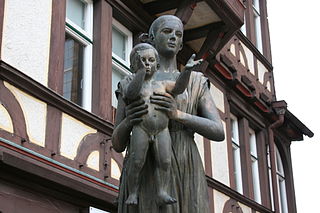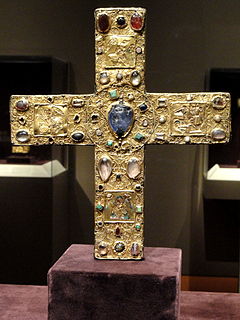Related Research Articles

Henry I of Hesse "the Child" was the first Landgrave of Hesse. He was the son of Henry II, Duke of Brabant and Sophie of Thuringia.

Otto I of Hesse was Landgrave of Hesse from 1308 until his death.
Gerard I, Count of Guelders was Count of Guelders. He was the son of Theodoric of Wassenberg.
Dirk VII was the count of Holland from 1190 to 1203. He was the elder son of Floris III and Ada of Huntingdon.
Walram II of Nassau, German: Walram II. von Nassau, was Count of Nassau and is the ancestor of the Walramian branch of the House of Nassau.
The title of Count of Zutphen historically belonged to the ruler of the Dutch province of Gelderland. The lordship was a vassal title before it eventually become a county itself
The Friso-Hollandic Wars, also called Frisian-Hollandic Wars, were a series of short medieval wars consisting of the attempts made by the counts of Holland to conquer the free Frisian territories, which lay to the north and east of their domain. These wars were waged off and on from 1256 to 1297, 1324 to 1348, 1396 to 1411, and from 1421 to 1422, although it could be argued that a state of war continued to exist between the County of Holland and the Frisian territories till well after the year 1500.

Gerard III of Guelders was the Count of Guelders and Zutphen from 1207 until his death in 1229. He was a son of Count Otto I of Guelders, and is sometimes called Gerard IV or Gerard V. Gerard married Margaretha of Brabant, the daughter of Duke Hendrik I of Brabant and Matilda of Flanders, Duchess of Brabant, in 1206.
Otto I of Guelders (1150–1207) was a Count of Guelders and Zutphen from 1182 until his death in 1207. He was a son of Duke Hendrik of Guelders and Agnes of Arnstein. He married Richardis of Bavaria in 1184. Richardis was a daughter of Otto I Wittelsbach, Duke of Bavaria.
Henry I, Count of Guelders (1117–1182) was Count of Guelders from 1131 until 1182. He was a son of Gerard II of Guelders and Ermgard of Zutphen.

The Counts of Vianden, ancestors of the House of Orange-Nassau, were associated with the castle of Vianden in Luxembourg.
Henry I, Duke of Brunswick-Lüneburg, called the Admirable, a member of the House of Welf, was the first ruler of the Principality of Grubenhagen from 1291 until his death.
The Conradines or Conradiner were a dynasty of Franconian counts and dukes in the 8th to 11th Century, named after Duke Conrad the Elder and his son King Conrad I of Germany.

Liudolf of Brunswick was Margrave of Frisia, Count of Brunswick, Count in the Derlingau and the Gudingau.

Friese Freedom or Freedom of the Frisians was the absence of feudalism and serfdom in Frisia, the area that was originally inhabited by the Frisians. Historical Frisia included the modern provinces of Friesland and Groningen, and the area of West Friesland, in the Netherlands, and East Friesland in Germany. During the period of Frisian freedom the area did not have a sovereign lord who owned and administered the land. The freedom of the Frisians developed in the context of ongoing disputes over the rights of local nobility.

Conrad II of Luxembourg was count of Luxembourg (1131–1136), in succession to his father William I of Luxembourg. His mother was Mathilde or Luitgarde of Northeim.
Ermengarde of Zutphen was countess of Zutphen (1122–1138), succeeding her elder brother Henry II, Count of Zutphen. Their parents were Otto II, Count of Zutphen and Judith of Arnstein.
Gerard II was Count of Guelders from March 1129 until his death on October 24, 1131. He was the son of Gerard I, Count of Guelders.
Agnes of Meissen was a noblewoman, the daughter of Albert II, Margrave of Meissen and his wife Margaret of Sicily.